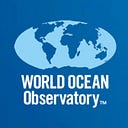The Nord Stream Line
The underwater natural gas pipelines in the Baltic Sea and North Atlantic were disrupted in late September, causing enormous leaks of methane within the ocean and atmosphere. Who did this and why? And what does it mean for future disruptions of its kind that could affect all of us here on Earth?
Source: WikiMedia Commons
CC-By-SA 4.0: https://www.berria.eus/lizentzia
commons.wikimedia.org/wiki/File:Nord_Stream_pipelines_on_map.svg
As the world turns around war and threats of war, the ocean may seem again a place apart. There is geopolitical anxiety in the Taiwan Straits for example, where naval operations and incremental bellicose gestures reveal the tension over control of key maritime areas and ship routes that affect other financial maneuvers including supply chain interruption, market instability, and trade relations as surrogate fields for political disagreements.
But on September 26th, things changed, not in Asia but in the Baltic Sea and North Atlantic, where underwater cables and pipelines serve as essential conduits for transactions, energy transfer, and international communications. Those facilities are mostly unknown to the general public, but without them the public and its interests would be severely curtailed; another function of the ocean around which so much of our modern world is organized. This week the underwater gas pipelines, Nord Stream 1 and 2, connecting Poland to Norway, as a future distribution route for Russian gas sold to Europe, were sabotaged by as yet unidentified agents; neither pipeline was operational, but the breaches caused several enormous leaks of methane contained within into the ocean and atmosphere. Methane is of course a prime contributor to climate change, and this incident has been described as the largest single methane release in recorded history. The leadership of the North Atlantic Treaty Organization (NATO) characterized the action as “deliberate, reckless, and irresponsible…”
Suspicion fell immediately on the Russian government, but there are questions as to why it would sabotage what was the instrument for gas sales to needy European markets and a necessary means for future capital. As the European community, already aware of its vulnerability in the coming winter, is already positioning itself for alternative supply, from the Arab other non-Russian producers, obviating the strategic significance of Nord Stream.
There is in fact a new pipeline for this purpose, from Poland to Norway, that runs in parallel, and in some places crosses the Nord Stream line. The causative explosions were of earthquake scale. According to recent news reports, the German security forces estimated the explosive charges as equivalent to 500 tons of TNT. The Swedish National Seismic Network used its earthquake monitoring devices to estimate the largest explosion at 100 to 200 tons of TNT. In addition, reports of unidentified drones in the area and in the Norwegian offshore oil fields drove the speculation of sabotage.
Perhaps it will shortly be explained. Who did it and why? But under this circumstance lies another vulnerability, the ability of manned or remotely operated submersibles to access these pipelines and cables, to render them momentarily or ultimately useless, and to disrupt transaction and exchange of funds and information that would affect every person on earth, every aspect of how are lives are organized and linked. Such a strategy perpetrated by a leader or government with no care for the consequence is almost unthinkable. But so too, it can be argued for the use of tactical nuclear weapons, to destroy and contaminate people, places, and institutions on which the world relies.
I recently described the contradiction between sovereignty and commonality. Here is a tragic, perfect example: one nation, one leader, obsessed by a sovereign command, without compromise or allegiance to values outside narrow territorial victory and nationalistic gratification. The Nord Stream sabotage is more than a singular event with tragic, localized consequence. It is a symbol of disconnection, ironically placed on the ocean floor as part of a system of connection. Invisible, underwater, it is a line still cosmically crossed, a moral outrage.
PETER NEILL is founder and director of the World Ocean Observatory, a web-based place of exchange for information and educational services about the health of the world ocean. He is also host of World Ocean Radio, upon which this blog is inspired. World Ocean Radio celebrates 15 years this year, with more than 645 episodes produced to date.
Do you prefer to listen? Find us on YouTube.
